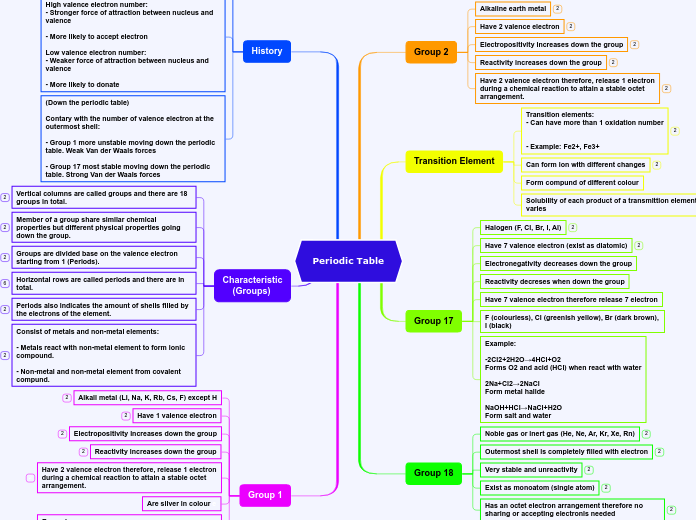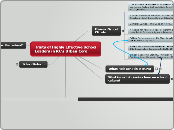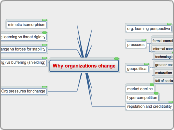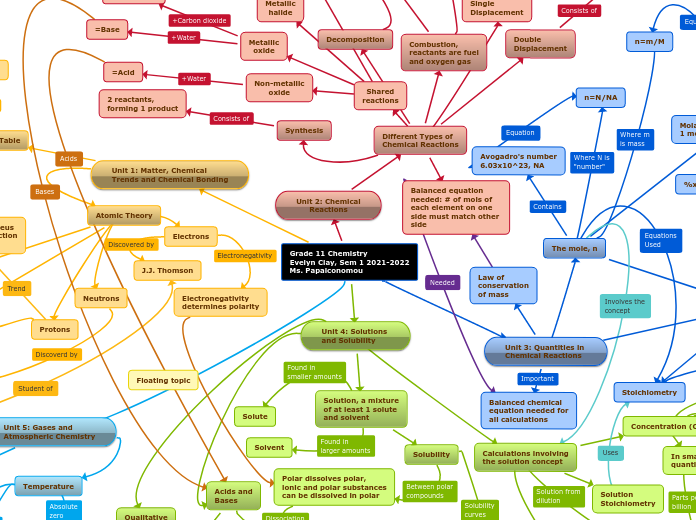Periodic Table
The part of speech is a category to which a word is assigned according to its syntactic functions. In English the main parts of speech are noun, pronoun, adjective, determiner, verb, adverb, preposition, conjunction, and interjection.
Group 1
A preposition is one of the most exciting parts of grammar. A preposition is used to describe the location of something in relation to something else.
Example:
H20+2Na→2NaOH+H2
From hydrogen and base(NaOH) when react with water
O2+4Na→2Na2O
Form metal oxide when react with O2
2Na+Cl2→2NaCl
Form metal halide when react with halogen
Are silver in colour e
A group of words used with the force of a single preposition is called phrase preposition.
according to, by means of, owing to, with a view to, in place of, in front of, etc.
Participle preposition consists of words that end in “ing”.
regarding, barring, concerning, considering, etc.
When a preposition consists of more than one word, it is called double preposition.
into, within, upto etc.
Have 1 valence electron
Compound preposition consists of two or more words.
on behalf of, according to, in front of, from across, etc.
Alkali metal (Li, Na, K, Rb, Cs, F) except H
When a preposition consists of one word it is called single or simple preposition.
in, at, on, to for, of, from, up, after, over, under, with, etc.
Characteristic
(Groups)
An adverb is used to describe a verb, but it can also describe an adjective or another adverb.
Adverbs normally help paint a fuller picture by describing how something happens.
Consist of metals and non-metal elements:
- Metals react with non-metal element to form ionic compound.
- Non-metal and non-metal element from covalent compund.
Especially, Specifically, Merely, Either
Periods also indicates the amount of shells filled by the electrons of the element.
A lot, Little, Much
Horizontal rows are called periods and there are in total.
The intensifiers strengthen adverbs adjectives and adverbs and down- toners make them weaker.
down-toners
Fairly, Rather
intensifiers
Extremely, Very
Groups are divided base on the valence electron starting from 1 (Periods).
Just, Afterward, Soon, Currently
Member of a group share similar chemical properties but different physical properties going down the group.
Always, usually, Never
Vertical columns are called groups and there are 18 groups in total.
Carefully, Slowly
History
A numeral is a word or phrase that describes a numerical quantity.
Some theories of grammar use the word 'numeral' to refer to cardinal numbers that act as a determiner to specify the quantity of a noun, for example the 'two' in 'two hats'.
(Down the periodic table)
Contary with the number of valence electron at the outermost shell:
- Group 1 more unstable moving down the periodic table. Weak Van der Waals forces
- Group 17 most stable moving down the periodic table. Strong Van der Waals forces
(Across the periodic table)
High valence electron number:
- Stronger force of attraction between nucleus and valence
- More likely to accept electron
Low valence electron number:
- Weaker force of attraction between nucleus and valence
- More likely to donate
The current periodic table is arranged in order of incresing proton number in relation to the electron arrangement.
One, two..
Dimtri Mendelev arranged the elements in the order of incresing atomic mass.
First, second..
Group 18
A pronoun is a word that can be used in place of a noun, typically after the noun itself has already been stated.
Has an octet electron arrangement therefore no sharing or accepting electronis needed
Reciprocal pronouns are used for actions or feelings that are reciprocated. The reciprocal pronouns are each other and one another.
Each other, one another
Exist as monoatom (single atom)
A reflexive pronoun ends with ...self or ...selves and refers to another noun or pronoun in the sentence (usually the subject of the sentence). The reflexive pronouns are myself, yourself, herself, himself, itself, ourselves, yourselves, and themselves.
Itself, Himself
Very stable and unreactivity
Demonstrative pronouns are used to demonstrate (or indicate). This, that, these, and those are all demonstrative pronouns.
This, These
Outermost shell is completely filled with electron
Possessive pronouns are used to show possession. The possessive pronouns are mine, yours, his, hers, ours, and theirs.
His, Your
Noble gas or inert gas (He, Ne, Ar, Kr, Xe, Rn)
The personal pronouns are I, you, he, she, it, we, they. More often than not (but certainly not always), they replace nouns representing people.
He, They
Group 17
An adjective is a word that's used to describe a specific noun and to provide more detail to the listener.
Example:
-2Cl2+2H2O→4HCl+O2
Forms O2 and acid (HCl) when react with water
2Na+Cl2→2NaCl
Form metal halide
NaOH+HCl→NaCl+H2O
Form salt and water
F (colourless), Cl (greenish yellow), Br (dark brown), I (black)
Have 7 valence electron therefore release 7 electron
Reactivity decreses when down the group
Electronegativity decreases down the group
Have 7 valence electron (exist as diatomic)
Superlative adjectives demonstrate a higher level of comparison between entities.
She is the prettiest princess.
Halogen (F, Cl, Br, I, Al)
Expresses a comparison between two entities or groups of entities in quality or degree.
He is taller than she is.
Transition Element
A noun is defined as a person, place, thing or idea. Proper nouns always begin with a capital letter. Common nouns, which are general words, such as 'cars,' are not capitalized.
Solubility of each product of a transmittion element varies
A noun which refers to a group of things/people.
Family, Class
Form compund of different colour
Can form ion with different changes
Countable nouns are nouns that can be counted, even if the number might be extraordinarily high.
Uncountable nouns are nouns that come in a state or quantity which is impossible to count; liquids are uncountable, as are things which act
like liquids.
Cats, Rain
Transition elements:
- Can have more than 1 oxidation number
- Example: Fe2+, Fe3+
Proper nouns are the names of specific people or places. They should always begin with a capital letter.
Mary, Paris
Group 2
A verb is an action word or 'doing' word that signifies movement in some way.
Have 2 valence electron therefore, release 1 electron during a chemical reaction to attain a stable octet arrangement.
An auxiliary verb helps the main (full) verb and is also called a 'helping verb.' With auxiliary verbs, you can write sentences in different tenses, moods, or voices.
You have been practicing hard.
Reactivity increases down the group
A participle is a verb form that can be used as an adjective or to create a verb tense. There are two types of participles: Present participle (ending -ing) and Past participle (usually ending -ed, -d, -t, -en, or -n).
The winning athlete gets a trophy.
Electropositivity increases down the group
A modal is a type of auxiliary (helping) verb that is used to express: ability, possibility, permission or obligation. The main modal verbs in the English language are: can, could, may, might, must, shall, should, will, would.
I might go to the park if I get my homework done.
Have 2 valence electron
A linking verb connects the subject with a word that gives information about the subject, such as a condition or relationship.
You look exhausted after studying all night.
Alkaline earth metal
A verb with its own meaning: a verb that is not an auxiliary verb.
Create sentences
They have it.









